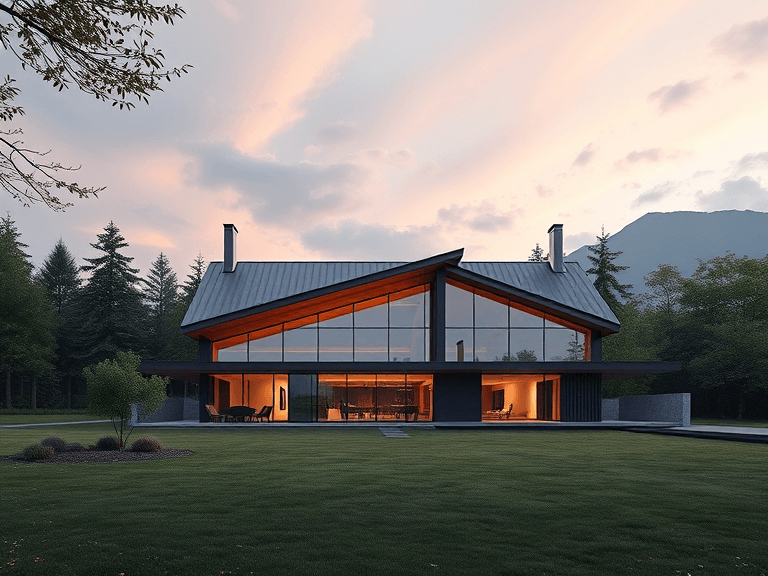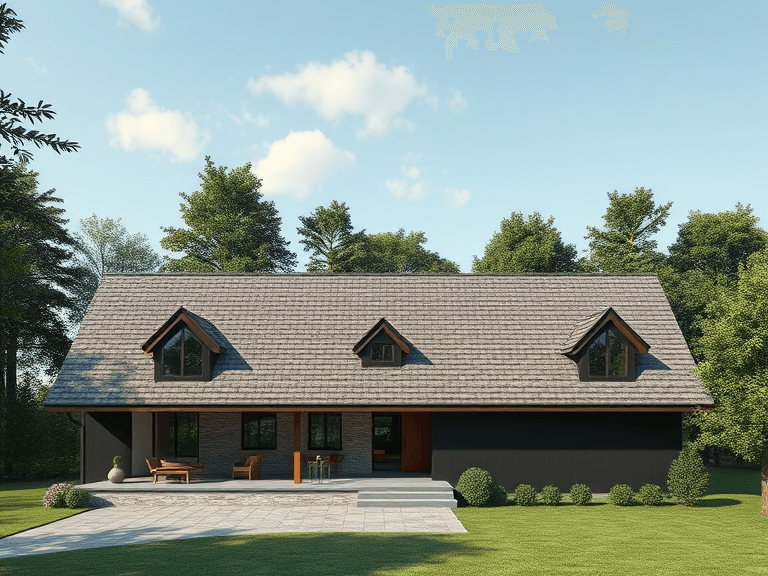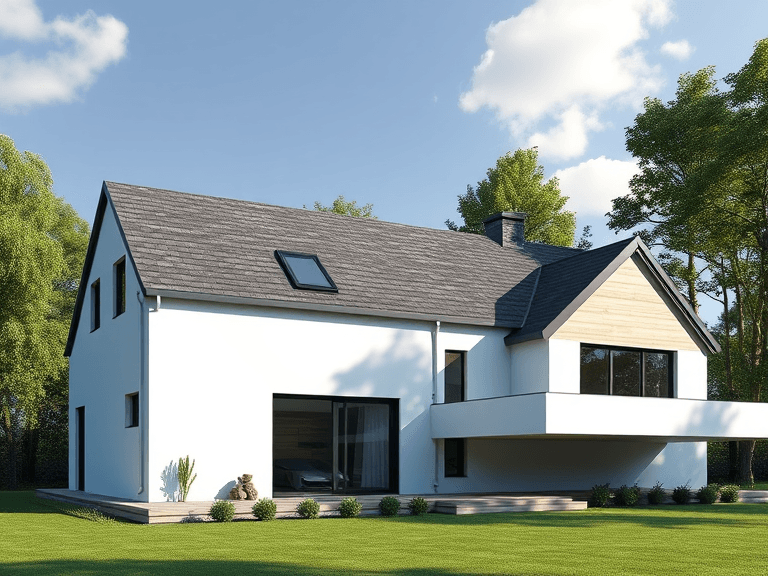
Slanted roofing, often referred to as pitched or sloped roofing, is characterized by a design that inclines at an angle rather than remaining flat. This architectural choice distinctly differentiates it from flat roofing systems, which have minimal or no slope. Slanted roofs allow for effective water drainage, thus reducing the risk of leaks and water damage, which are prevalent concerns for flat roofs. As a result, these roofs are particularly adept at withstanding harsh weather conditions, making them a popular choice in various climates.
In terms of materials, slanted roofing can be constructed using a variety of options, including asphalt shingles, clay or concrete tiles, and metal sheeting. Each of these materials comes with its own set of advantages, contributing to the overall benefits of slanted roofing for homes. For instance, asphalt shingles are known for their affordability and ease of installation, while metal roofs offer exceptional durability and energy efficiency. Tiles, although heavier, provide a timeless aesthetic and are often chosen for their longevity.
The architectural designs that frequently incorporate slanted roofing range from traditional styles, such as cottages and bungalows, to modern configurations seen in contemporary homes. Gable roofs, which are a type of slanted roof with two slopes meeting at a peak, are among the most common and can enhance both the functionality and visual appeal of a house. Historically, slanted roofs have been favored in various cultures to facilitate better ventilation and light, making them not just practical but also an integral element of architectural heritage. In summary, slanted roofing stands as a versatile and effective solution, blending aesthetic appeal with practical benefits, and adapting to both historical and modern residential applications.
Enhanced Water Drainage and Longevity
One of the primary benefits of slanted roofing for homes is its remarkable efficiency in facilitating water drainage. The inclined surface of a slanted roof allows rainwater and melting snow to flow off effortlessly, significantly reducing the chances of water pooling. This functionality is crucial, as stagnation can lead to a host of problems, including leaks, mold growth, and structural damage to the underlying materials. By preventing water accumulation, slanted roofs help maintain the integrity of the entire roofing system.
Moreover, the effective drainage provided by slanted roofing directly contributes to the longevity of the roofing materials. Traditional flat roofs are often prone to wear and tear due to water retention, which may accelerate deterioration. In contrast, slanted roofs are designed to minimize contact with standing water, allowing materials such as shingles, tiles, or metal to maintain their quality for an extended period. This durability not only preserves the aesthetic appeal of your home but also enhances its overall market value.
Maintenance is another key consideration when discussing slanted roofing. The natural design offers easy access for routine inspections and cleaning, which can be vital for keeping the roof in good condition. Homeowners may find that this ease of maintenance lowers repair costs over time as potential issues can be identified and resolved promptly. It is worth noting that minor repairs on slanted roofs tend to be simpler and more cost-effective than those on flat roofs, where trapped moisture can lead to more severe complications.
In conclusion, the practical advantages of slanted roofing, particularly its ability to enhance water drainage and promote longevity, make it a prudent choice for homeowners. By investing in a slanted roofing system, homeowners can enjoy reduced risks of leaks and water damage while benefiting from lower maintenance and repair expenses.

Improved Energy Efficiency and Insulation
One of the notable benefits of slanted roofing for homes is enhanced energy efficiency. The angle of a slanted roof contributes significantly to temperature regulation within the house. As warm air naturally rises, the design allows it to escape more easily during warmer months, promoting better air circulation. This natural ventilation is essential in maintaining a comfortable indoor climate without relying excessively on air conditioning systems, thus reducing energy consumption.
In addition to temperature regulation, slanted roofs provide better opportunities for effective insulation. The slope of the roof creates ample space for insulation materials, which can be tailored to specific climate needs. By utilizing high-quality insulation products, homeowners can further decrease the energy needed for heating and cooling, leading to lower energy bills over time. The strategic installation of insulation beneath slanted roofing not only enhances comfort but also contributes to sustainability by minimizing the carbon footprint of the home.
Moreover, the design of slanted roofs proves advantageous for the installation of energy-efficient systems. For example, solar panels find a favorable angle on slanted roofs, optimizing their exposure to sunlight. This aspect encourages the use of renewable energy sources, as homeowners are more likely to incorporate solar technology into their building design when the roof’s structure supports it. Consequently, this can lead to significant savings on electricity bills and a shift towards greener living.
In summary, slanted roofing presents various benefits regarding energy efficiency and insulation. From improved air circulation to facilitating the integration of renewable energy systems, these roofs play a pivotal role in enhancing a home’s overall sustainability and reducing operational costs.
Aesthetic Appeal and Design Flexibility
Slanted roofing offers significant aesthetic advantages that can greatly enhance a home’s overall curb appeal. This roofing style is known for its ability to seamlessly integrate with a variety of architectural designs, ranging from traditional to modern. The distinctive angles and slopes of slanted roofs create visual interest and can transform an otherwise mundane facade into an attractive statement. The versatility inherent in slanted roofing allows homeowners to select designs that complement their personal taste while also adhering to the established character of their neighborhood.
Moreover, one of the key benefits of slanted roofing for homes is the design flexibility it provides. Homeowners can take advantage of the roof’s slope to incorporate features such as large overhangs that offer shade and protection from inclement weather. The sloped surfaces also allow for the installation of skylights, which not only enhance the natural light within the home but also add to the visual appeal by creating dynamic indoor spaces. Additionally, slanted roofing can be utilized to create additional living areas such as attics, which can serve various purposes, from storage to recreational spaces, further expanding the functionality of the home.
When considering the aesthetic impact of slanted roofing, the choice of colors, materials, and textures plays a crucial role. Whether opting for traditional shingles, modern metal roofing, or environmentally-friendly materials, homeowners can effectively customize the appearance of their roofs to align with their stylistic preferences. This level of customization ensures that the benefits of slanted roofing for homes extend beyond mere functionality, offering a unique opportunity to express individuality through architectural choices. With thoughtful design and a keen eye for detail, slanted roofing can elevate both the aesthetic and value of a home.


